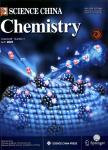版权所有:内蒙古大学图书馆 技术提供:维普资讯• 智图
内蒙古自治区呼和浩特市赛罕区大学西街235号 邮编: 010021

作者机构:Key Laboratory of Macromolecular Synthesis and Functionalization Ministry of Education State Key Laboratory of Silicon Materials Department of Polymer Science and Engineering Zhejiang University Hangzhou 310027 China Department of Physics Chinese University of Hong Kong New Territories China Department of Materials Science & Engineering University of Washington Seattle Washington 98195 USA
出 版 物:《Science China Chemistry》 (中国科学(化学英文版))
年 卷 期:2017年第60卷第4期
页 面:561-569页
核心收录:
学科分类:081704[工学-应用化学] 07[理学] 08[工学] 0817[工学-化学工程与技术] 070303[理学-有机化学] 080502[工学-材料学] 0805[工学-材料科学与工程(可授工学、理学学位)] 0703[理学-化学]
基 金:supported by the National Natural Science Foundation of China(51473142,21674093,21374075) the Major State Basic Research Development Program(2014CB643503) International Science and Technology Cooperation Program of China(2016YFE0102900)
主 题:solution-processed small molecules diketopyrrolopyrrole pyrene organic solar cells
摘 要:Three new electron donating small molecules (SMs), Pyr(EH-DPP)2, Pyr(HD-DPP)2 and PyrA(EH-DPP)2, are designed and synthesized through coupling electron rich pyrene core with electron deficient diketopyrrolopyrrole (DPP) terminals, of which the derived organic solar cells (OSCs) exhibit interesting structure-performance correlation. It shows that the tune of their solubilizing side chains and n-bridge for the acceptor-donor-acceptor (A-D-A) SMs can significantly alter the resultant short-circuit current density and power conversion efficiency (PCE) in OSCs. The Pyr(EH-DPP)2 with short side chains displays broader absorption and higher hole mobility than the Pyr(HD-DPP)2 with long side chains. Although showing planar structure, the acetylene bridge-incorporated PyrA(EH-DPP)2 adapts an undesired edge-on packing and strong aggregation in film, leading to non-ideal morphology and poor miscibility with fullerene acceptors. As a result, the PCE of the solar cell based on Pyr(EH-DPP)2 is several times higher than those based on Pyr(HD-DPP): and PyrA(EH-DPP)2, indicating the A-D-A combination of polyaromatics with DPP would be the promising skeleton for developing photovoltaic semiconductors.